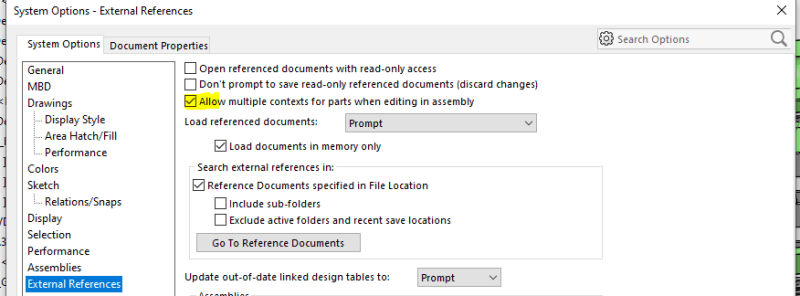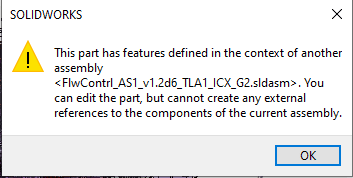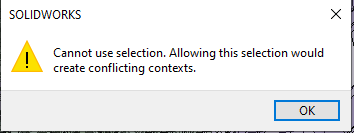Hi all,
I love(!) this software most of the time, but sometimes I F'ing hate the F'ing thing!!
(had to blow some steam off)
Now with that out of the way..
I'm working on an assembly in which some of the parts are virtual and had been created using in-context modeling method.
For the sake of the argument, I'm working on a version 2.0 of the assembly, while one of the virtual parts was made in the context of version 1.5 of the same assembly.
Now when I try to change a feature in the said virtual part, I get an error saying that the part has features defined in the context of another assembly (version 1.5), and that I can edit the part but can't create any new external references to the current assembly (version 2.0).
I scoured the internet for a possible solution, but everything I found had a PDM involved in it or it had nothing to do with in-context modeling (e.g. broken reference between a model and it's drawing which is easy to fix).
Is there a way to fix this F'ing issue, without having to rebuild the whole assembly again from version 1.5 to get to the feature needed to be changed?
Thanks!
SD
I love(!) this software most of the time, but sometimes I F'ing hate the F'ing thing!!
(had to blow some steam off)
Now with that out of the way..
I'm working on an assembly in which some of the parts are virtual and had been created using in-context modeling method.
For the sake of the argument, I'm working on a version 2.0 of the assembly, while one of the virtual parts was made in the context of version 1.5 of the same assembly.
Now when I try to change a feature in the said virtual part, I get an error saying that the part has features defined in the context of another assembly (version 1.5), and that I can edit the part but can't create any new external references to the current assembly (version 2.0).
I scoured the internet for a possible solution, but everything I found had a PDM involved in it or it had nothing to do with in-context modeling (e.g. broken reference between a model and it's drawing which is easy to fix).
Is there a way to fix this F'ing issue, without having to rebuild the whole assembly again from version 1.5 to get to the feature needed to be changed?
Thanks!
SD





